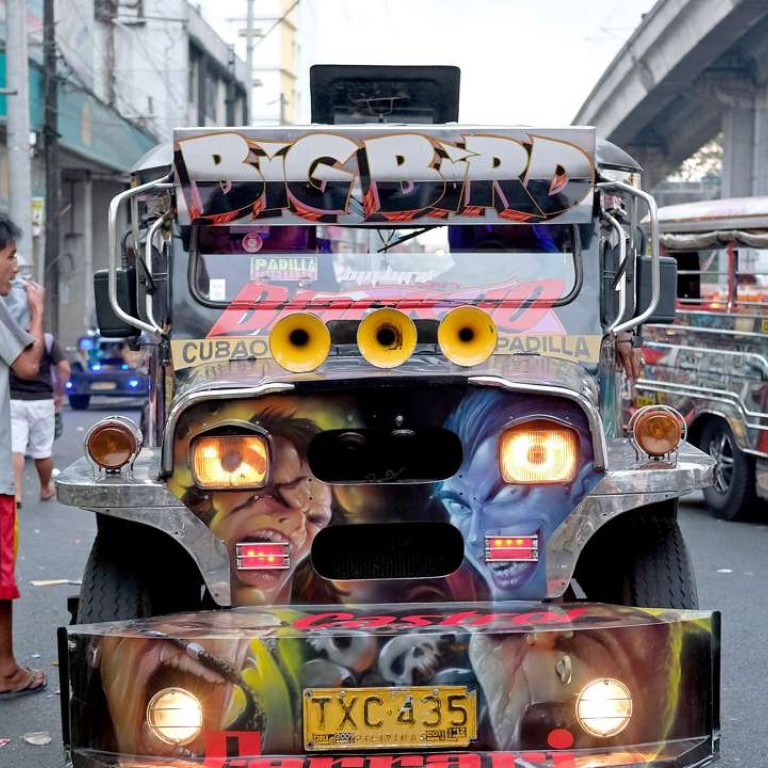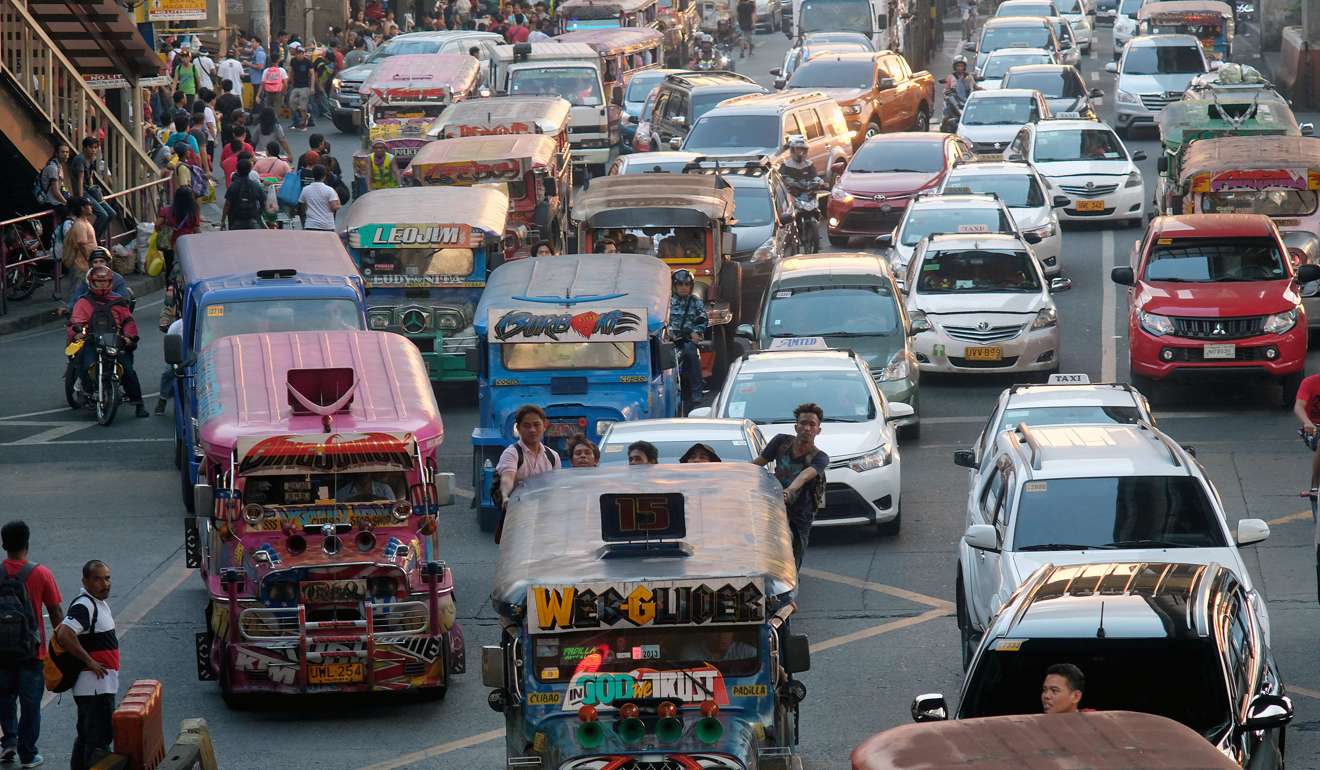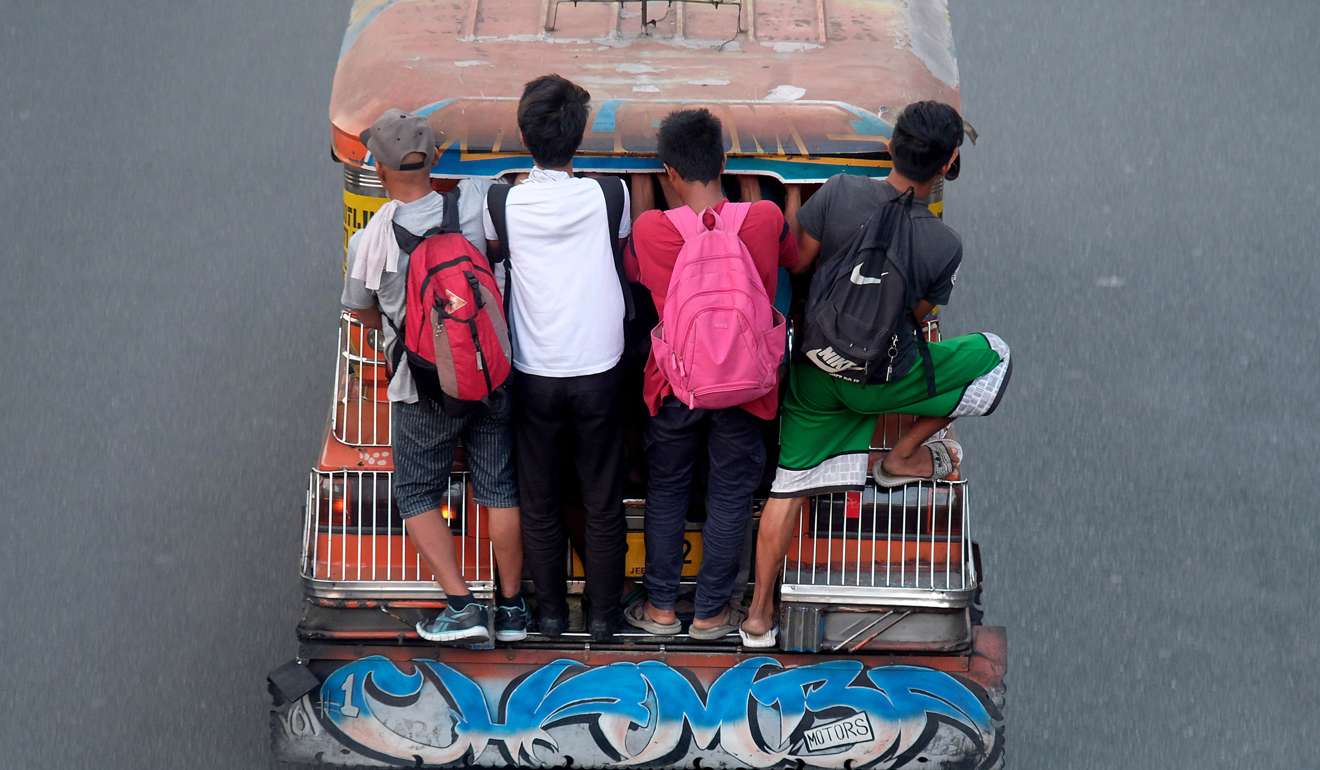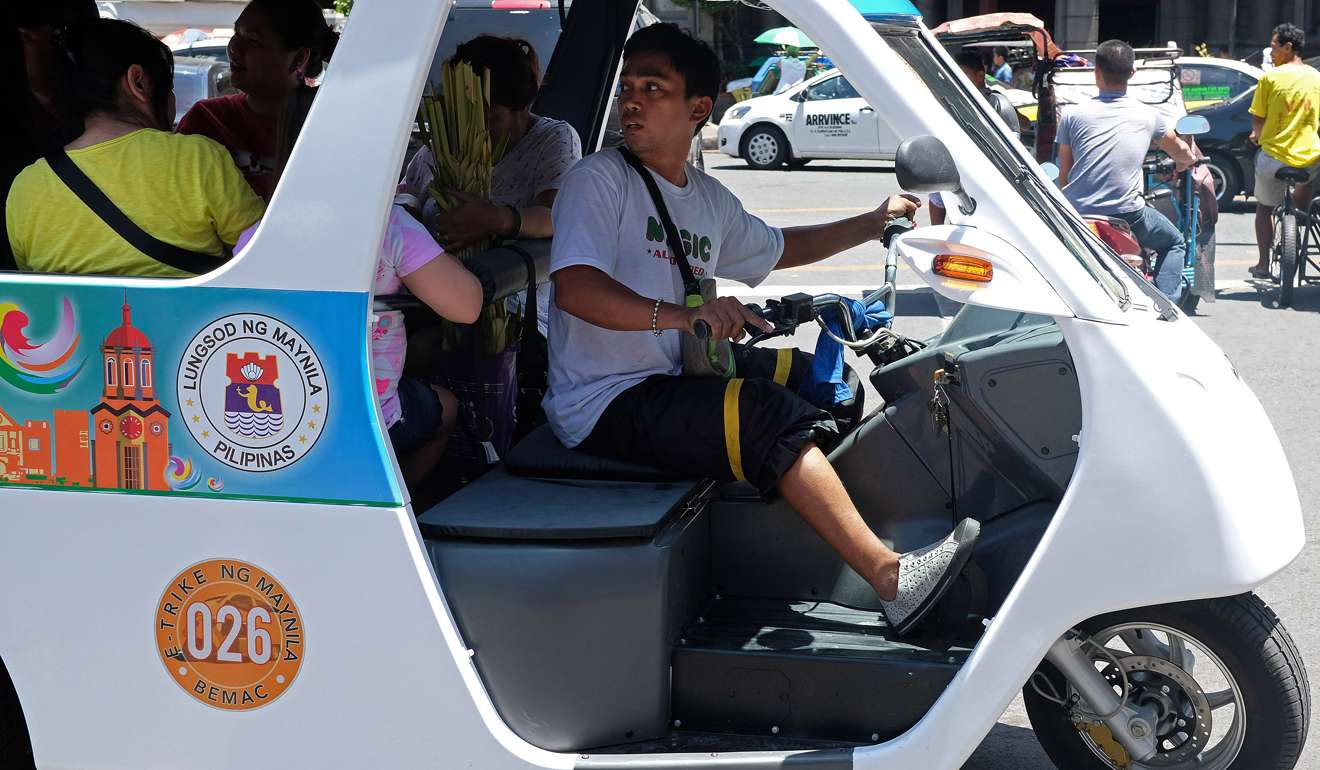
Duterte wants to clear the air, and the iconic Philippine jeepney could be a major casualty
The Philippine government wants to replace scores of ageing jeepneys with environment-friendly electric vehicles
Smoke-belching jeepneys are as iconic to Manila as the cable cars of San Francisco, the gondolas on Venice’s canals and the black cabs in London. The most popular public transport in the Philippines is now being targeted for the scrap heap as President Rodrigo Duterte tries to modernise the nation and clean up its air.
It’s a threat Hilario Osmena vows to fight even though his beloved jeepney - modelled around US military jeeps left over from the second world war - is peeling green and yellow paint to reveal its rusting hulk. A headlamp is kept in place by makeshift wire while worn seats sag from having ferried passengers around the presidential palace in Manila for 17 years.
For Osmena, 54, it’s the source of 600-700 pesos ($12-$14) in daily wages that help treat his cancer-stricken father, who used savings and retirement pay after years of government service to buy the automobile in 2000. But the Philippine government wants to replace scores of ageing jeepneys with environment-friendly electric vehicles that cost over 1 million pesos each. Drivers say they can’t afford the switch, and staged a nationwide strike in February, prompting schools to cancel classes and disrupting commuters.

“Jeepney drivers like us will really suffer if the government’s plan pushes through,” said Osmena. “There are so many people who will lose their jobs, and I don’t think the government will be able to give all of them alternative sources of income.”
The standoff highlights the challenge the country faces as it tries to cut emissions 70 per cent by 2030 as part of a global push to move away from fossil fuels. It’s trying to balance the need to protect the environment against the cost to the public, which views the jeepneys through nostalgia-tinged lenses as an enduring symbol. In Asia’s emerging economies, with limited government funds and lower incomes, analysts say progress from raising electric vehicle use to cutting fuel emissions could take a decade.

“There are certainly many challenges involved in implementing clean air or clean fuel initiatives in emerging markets,” said Victor Shum, vice president at IHS Energy.
“If the clean air solution involves people paying more, it’s difficult. I’m not surprised the jeepney drivers are protesting - to get them to invest in electric vehicles is going to be a challenge unless the government subsidises.”

As part of a broader plan to upgrade the public transportation system, President Duterte’s administration is seeking the modernization of jeepneys, an initiative that has been mooted in prior years.
While details including funding are yet to be finalised, the transport ministry is working to come up with measures to help drivers, including a “very generous” credit facility for the nation’s 230,000 jeepney drivers, said Martin Delgra, chairman of the Land Transportation Franchising and Regulatory Board leading the jeepney programme. A “big chunk” of proposed excise taxes on fuel and cars will go to the scheme, he said.
Jun Magno, head of the STOP and Go Transport Coalition, isn’t convinced yet and his group may plan another three-day strike. Magno said drivers may be “buried in debt” if the switch to electric vehicles doesn’t work out.

For Osmena, buying an electric vehicle for 1.5 million pesos, double the price of a new diesel jeepney, is too expensive. The Land Transportation’s Delgra said the cost can come down to 1 million pesos if the automobiles are mass-produced.
“The poor ones will be the ones affected by this plan,” said Osmena.
“The government is blaming everything on jeepneys like traffic and air pollution.”
While the Philippines’ air quality isn’t as bad as China, the world’s biggest emitter, it is still below World Health Organisation standards, according to Kaye Patdu, head of programmes at Clean Air Asia, a non-profit group that advises governments and cities in the region.
Southeast Asian countries are ranked among the most polluted in the world on Verisk Maplecroft’s Air Quality Index, which assesses the atmospheric concentration of particles smaller than 2.5 micrometres, known as PM 2.5. Nations including Thailand, Laos and Vietnam are classified as extreme risk, with the Philippines and Singapore medium risk.

The Philippines last year upgraded its fuel standard to Euro IV diesel, a grade containing four times more sulphur than China’s benchmark fuel, while Indonesia plans to apply Euro IV for motor vehicles in 2018.
With jeepneys continuing to be the cheapest mode of transportation even after more than half a century on the roads, they may be around a while longer, according to Den Syahril, an analyst at consultancy FGE.
“People in the Philippines have been very used to driving jeepneys, and for them to just move to electric all of a sudden is definitely not going to happen,” said Den.
“Who’s going to pay for the cost of the electric vehicles? Governments in this region have a lot of other priorities, I don’t think they will set aside a big budget for emission reduction.”

